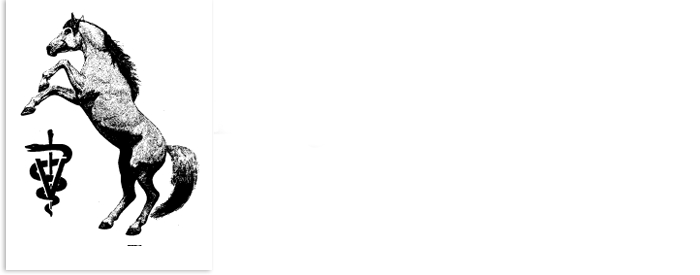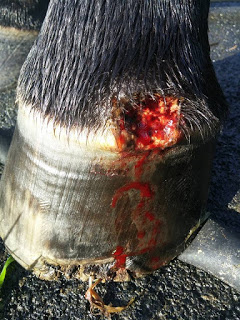Summer Sores
Summer Sores are sores often red or red and yellow that look like open sores that won't heal. They are often quite itchy to the horse. As the name implies summer time is the time they are most commonly seen but lately I have been seeing them more often and much longer into the fall until we get a good freeze.
Why this timing? Because the culprit in this case is a reaction to the larvae of a horse parasite - Habronema muscae, Habronema microstoma, and Draschia megastoma - that are transmitted by flies. Once it freezes, the fly population diminishes and so does the problem with summer sores.
The habronema live in a horse's stomach without causing much of a problem. They shed eggs which are passed into a horse's manure where they hatch into larvae. There the habronema larvae are eaten by fly larvae. As the fly larva turns into an adult fly, the habronema larva turns into a form of larva that can infect a horse.
The infected adult fly deposits the habronema larvae on horses while feeding on a small wound. It is the reaction to the larva that causes the sore. Common sites include where the lips meet, the corner of the eyelids, the prepuce, the penis, and the very tip of the urethra, the lower leg at the fetlock or coronet. However, I have seen them in all sorts of places - a shoulder, the neck, virtually anywhere.
The lesions are often red and angry looking, and it is characteristic is to see yellow hard granules. Clients often call because the horse has a sore that does not heal.
Diagnosis can be a challenge because not all cases “read the book”. I have been convinced a few times that I am looking at a cancer, squamous cell carcinoma, only to biopsy and have it come back a habronema sore. Other times I have seen what looks like a sore related to an injury on a shoulder or leg and when it does not respond to treatment, a biopsy confirms it is a habronema summer sore.
Treatment can be just as challenging as diagnosis. Treatment starts with a local injection of ivermectin and corticosteroids along with systemic treatment with ivermectin. However, these once rare summer sores are more common and we are starting to see ivermectin resistance. To get a response it may require multiple treatments with ivermectin or a related medication moxidectin (sold as Quest) along with topical treatment with ivermectin, Other horses require topical corticosteroids combined with DMSO applied very aggressively. Still other horses require surgical removal to get the area to ultimately heal. Occasionally systemic steroid treatment helps as well.
In one bad case, I had a patient that for 3 years in a row got terrible sores at the corners of his lips. It took very aggressive treatment to heal each year. This horse was clearly very susceptible and probably has a weaken immune system because he also has Cushing’s disease where a horse produces too much cortisone, a hormone that suppresses the immune system. The horse’s trainer was cleverly able to modify a fly mask to extend past the lips. This extension combined with the other treatments ultimately helped heal this sore.
The fourth year he was able to avoid new summer sores. The trainer had him wearing the special modified fly mask early along with early and frequent de-worming, every horse on the farm received feed through fly control starting in April, fly traps were set up and the manure pile was sprayed. The combination of physically preventing the flies from reaching his lips and the fly control was crucial to preventing another year of these awful sores. Another step to consider would be adding fly predators. These are tiny insects delivered monthly that feed on fly larva.



